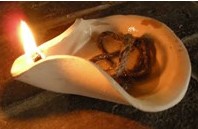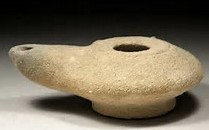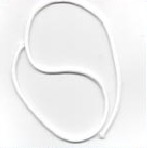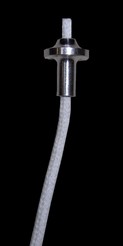Oil lamps have been used for thousands of years. The early oil lamps used various plant based oils, olive oil is thought to have been the oil primarily used in the Mediterranean. The wick used was any fibrous material, typically linen, papyrus or other plant fibers. Thankfully now wick are easily obtained and are made either from:-
Cotton Wick. A cotton wick will not burn for ever and will have to be replaced. They are the most common wick used, but they do have slight disadvantages. If the oil lamp is lit and left on until there is no oil left the wick will keep on burning. The heat produced when it is not burning oil but itself can produce so much heat that the oil lamp may shatter. So remember never to leave a room when a candle or oil lamp is alight. We also sell wick which has an metal collar, 4mm in diameter in 15cm lengths. Metal collar at widest is 1.2cm and the part that goes down into the oil lamps is 5mm in diameter. The wick should be adjusted so that it is between 1/4″ to 1/2″ above your lamp. Experiment with the height until you get a smooth flame shape.
Fiberglass Wick. Fiberglass is the most satisfactory wick. It used the oil efficiently and economically, is smoke free and gives a good flame shape. It’s big plus of course is that it does not burn itself, just the oil, so does not need to be replaced. Experiment with the height of the wick above the lamp, but for a smooth topped flame I would suggest that about 1/4″ above the top of the lamp is about right.
Indoor or outdoor use? All our wick are suitable for both! Except:-
Bamboo Torch Wicks Our replacement wicks for outdoor bamboo torches.
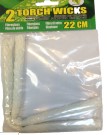
So enjoy your modern oil lamps, a far cry from the basic lamps used in Roman times and before!
